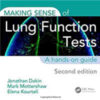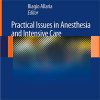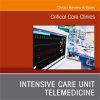Retrospective validation of a risk stratification tool developed for the management of patients with blunt chest trauma
onlinelibrary.wiley.comThe STUMBL score at a cut‐off of <12 did not predict all complications sufficiently well to recommend for general use in our population. However, a score >15 predicted prolonged LOS and a score >18 predicted mortality sufficiently to be clinically useful for these outcomes.
The STUMBL Score is composed of five simple predictors; patient age, number of rib fractures, presence of pre-existing chronic lung disease, use of pre-injury anti-coagulants and oxygen saturations of initial assessment in the ED.
The score is more accurate in New Zealand Pākehā and needs to be used with caution in Māori and Pasifika populations.
A larger prospective validation is required to further assess the score.
A multi‐centre, retrospective observational study was carried out in five EDs. Area under the receiver operating characteristic curve (AUROC) was calculated for all, early and late complications and ethnic sub‐groups.
A total of 445 patients were included. AUROC for all complications composite were, mortality, ICU admissions (0.78, 95% CI 0.73–0.81) and prolonged LOS were calculated.

















